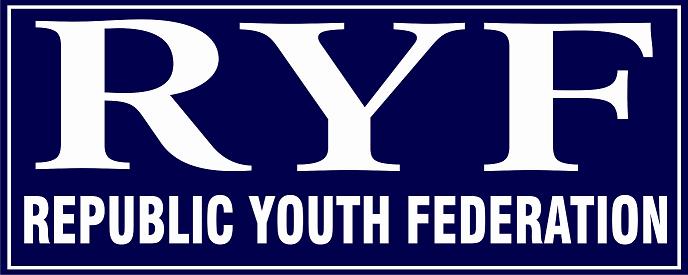When both India and Pakistan were preparing to celebrate the golden jublee of independence with gusto I Dec.1996, what was prominently missing , in the preparations by both govt. , non-govt. organizations, Parliaments and Assembly function, was a total lack of attention to spare even a thought for those ten lacs Punjabis who lost their lives in that blood bath of post-partition in which and about 80 lac Punjabis were uprooted. No body remembered those 30335 young women who were raped and butchered in that tragic event. Such a cold neglect and antipathy towards emotional issued stirred the intellectual of folklore Academy, which led to a calm and solder restlessness. As a consequeance, the Academy, resolved to pay a befitting tribute to these forgotten & ignored martyrs of those turbulent times, under the able and motivating leadership of Academy president Dr. Tara Singh. A Festival, “Raja Porus Indo-Pak Punjabi Friendship Festival.” Dedicated to First ‘Punjabi Hero’ in history, ‘Raja Porus’, and as tribute to punjabies, who lost their lives on both sides during partitions-saga at ( 1947 ), was celebrated from 30-31 Dec. 96 to 01 Jan. 1997, Border post (Amritsar). A sacred “movement” was installed at ‘No-man’s land’ on Indian side of the border, in the memory of 10 lakh Punjabi’s killed during 1947.The foundation stone was laid by leading (jouranalists)of major Punjabi journals and newspapers and waters from all five rivers of in divided Punjab were added to its foundation.
Five corners of this fifteen feet high monument are symbolic of five rivers of Punjab. The eternal flame, amid these, pay rich tributes to those neglected martyrs. Two hands on the top of it, symbolize, friendship, peace and cultural bonds and the pen nib held by these hands, indicates the creation of a new history. Three sides of the monument are clearly visible from both Pak and Indian sides. Two day fair is being organized every with flowers and lighting of ‘friendship flame’ and the fair culminates on second day with lighting & earther lampes at 7:00 p.m. on No-man’s land area. During these days various types of competitions among children, cultural programs and discussions on variety of subjects concerning the preservation of peace and goodwill, friendship and multi pronged exchange of ideas are organized so that a static and permanent shape can be given to an everlasting cooperation among Punjabis and a distinctive ‘Punjabiat’ can be maintained for future generations as well.
WHAT HAPPENED DURING THE PARTITION ?
· During 1941 census the undivided Punjab comprised of 57% Muslims 30% Hindus and 13% Sikhs.
· Earlier in 1940, Muslim League had passed a resolution for the first time.
· Before Partition in 1947, Punjab had 29 Districts and each district comprised of 1000 to 2000 villages. The entire state was divided into five divisions, namely Ambala, Jalandhar, Lahore, Rawalpindi and Multan.
· Sikhs were in majority only in Jagraon Tehsil, where as Sikhs paid Taxes for 40% of the land. They used to run 400 schools and 4 collages.
· Hindus and Sikhs left behind 51000 shops and 1,54,000 houses in Western Punjab Towns, Muslims left 17000 shops and 1,12,000 houses in Eastern Punjab.
· In post partitions era, West Punjab had 61980 Sq. Miles area and its population was 158 Lacs while east Punjab got only 37428 Sq. miles area with a population of 126 lacs.
· Punjab’s 260 lac acre land was the largest canal irrigated land in the world, as compared to USA’s canal irrigated land area of 230 lacs Acres, in the pre partition Punjab. India and Pakistan signed Indus water Treaty on 18th sept. 1960 at Rawalpindi. India received 20% of Indus water while Pakistan got 80% of the river water since the Western rivers had large volume of water as compared to Eastern Rivers.
· 30,335 women were raped during the partition episode and 860 children were forced, to be left behind, by mothers moving to Pakistan from eastern Punjab.
· 42,93,896 people were displaced from houses in east Punjab.
· Post independence Riots and mayhem had consumed almost 10 lacs lives by march 1948.
· Barring large scale destruction of lives of jews before and during the second world war, no other example is available of mass displacement of humanity of such a magnitude as that of the Punjabis displacement in post partition era. Although the exchanges of humanity between Greece and Bulgaria crossed the number of twenty lakh but no loss of life was reported.
a. Sir Padrill Moon and Lord Mount batten estimates the no. of casualties during partition between 2 to 2.5 lacs.
b. C.d. Khosla describes it between 4 or 5 lacs.
c. As per Tan Stephen and Michel Edwards, it is between 5 to 6 lacs.
d. Dr.Kirpal singh puts it between 7 to 8 lacs.
e. Folklore research academy (Regd.) Chandigarh estimates it upto 10 lacs.

No comments:
Post a Comment